Bomb Dog Training Aid Evaluation: ScentLogix™
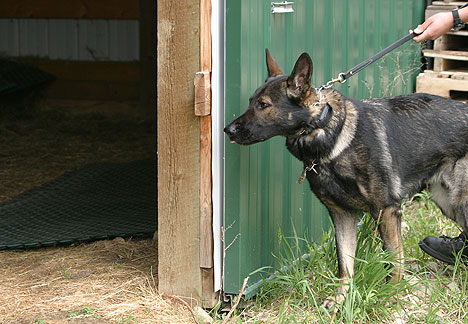
Foreword by Ed Frawley
I met Kevin Sheldahl in 1984 at a police K-9 school in Kansas. We have been good friends ever since. Kevin is a retired police K-9 handler. He became a K-9 Instructor and an International Police Dog Judge. Kevin's company K-9 Services runs 6-week police K-9 courses in which police officers learn how to become new K-9 handlers. To date, he has run 70 6-week courses and trained over 1,200 K-9 handlers. I don't know of another dog trainer that has Kevin's experience and knowledge of police service dogs training.
While presenting at a K-9 conference in Las Vegas I had the opportunity to sit in on a presentation about a product called ScentLogix™, made by a company producing training aides for explosive detector dogs, David Adebimpe PhD is the president of the company and the brains and motivation for it as well. The company produces training scents for explosive detection and soon to be narcotics detection.
I have used “pseudo” as an introductory method for drug detector dogs briefly in the beginning of their career for a long time with great success. This mirrors many large organizations experiences and certainly is nothing new. The pseudo many of us have experience with is now decades old and has a large volume of empirical evidence of its efficacy in training detector dogs. It does have its detractors in that it is not always a two way street…dogs working with pseudo indicate on the intended target illicit substance but dogs trained only on the illicit substance often do not indicate on pseudo. This is easily understood when you look into it a bit and see what the odors actually are and how they relate to the illicit substances and dogs scenting abilities.
But, I realized that David Adebimpe had a tough task ahead of him if he wanted to convince an always-skeptical law enforcement community that adding his scents to the mix would benefit the service dogs and the communities in which they worked.
In his presentation in Las Vegas I was able to get a couple of important question answered and learned a bit about olfactory theory. I am going to put this into terms I understand and maybe the reader can go more in depth if they choose to research this. In creating the scents two of the three olfaction theories that I heard David refer to were listed in some of the available published information. The third approach is based on some of David's research activities, and the applied use of his "dock-and-transmit" hypotheses about how and what the nose smells. When I walked into the class I had no clue what he was talking about when he used the terms surrogate and parent odors.
I will address parent odor first. Parent odor is the odor available for a dog to smell in the air around the target substance. Now, to simplify things you have to understand a couple of things about olfaction. Not every molecule in the air is a smellable component. Ok, smellable isn't a word but you get the idea. So if you look at the headspace (a cool term for the air around the target substance) you will find a smellable component. This is not necessarily filled with anything that explodes, or at least not one that is considered an explosive by the ATF. If this is the case, the parent odor can be recreated without the target substance. Also, everything that is in the headspace may not be smellable, and a dog to identify it may not use everything in the headspace! Just to complicate it more every dog may not learn it the same way! Some questions are yet to be completely answered about canine olfaction.
Next is surrogate odor. This is regarded as odor that smells so much like the parent odor that a K9 cannot know the difference. In the case where the smellable component contains an explosive then the parent odor approach will not work, a surrogate odor is needed. So, from my perspective, this is where the real work to create a training aide begins. The parent odor stuff seems pretty straightforward, it is what the dog would have access to smell whether you are using the manufactured training aide or the manufactured explosive to produce the odor. In the surrogate process you have to look at the theory of olfaction and capitalize on its advantages and opportunities.
For those of you who remember high school or college biology you might remember the "lock and key" model of olfaction. In brief it said molecules presented to the receptors found in the nasal epithelium of specific shapes interacted with specific receptors, which fired a message to brain, the brain (the olfactory bulb) processed this and the critter registered an odor. Really pretty simple…too bad it is pretty incomplete and not really useful enough of a theory. A second model states that the nose is a biological detector. So, in comes David's theory of olfaction that combines elements of both of these theories and adds to the equation, molecular size, charge, and rotational energy of the molecules. Wow, I don't claim to know this stuff but it certainly opens the doors to a few possibilities. Such as, if you can find a molecule that matches in weight, shape, charge, and rotation, the same receptor in the critters we use will fire sending the same message to the brain that the target odor would have. This is the approach that Dr. Adebimpe has used to create surrogate odors that smell just like parent odor. Now certainly I have over simplified this process and the theories presented. I don't intend to have this writing be an olfactory educational text.
So why bother with creating this stuff any way? Legitimate possession of explosives by law enforcement and others with a proper need and with proper procedures, licensure, storage etc. is allowed for by state, local, and federal authorities. There are many uses for explosives that are very important in industry, mining, construction, even art and entertainment. So to even really need the training scents that ScentLogix™ produces has to come into question.
To look at why manufactured scents might be of use in the training of the highly efficient detector dog we have to look at the aids we use in training detector dogs. First, lets look at some of the more easily obtainable aides. Smokeless powders, they are certainly not quite equal. Those of us who have been doing this for a while see that brands of smokeless vary tremendously and dog's responses vary as well. This was corroborated a while back by a study done at Auburn University where this phenomena was documented. Of course it was something we had seen empirically for a long time. Lets look at a high explosive now. The signature of C-4 changes over time, much more rapidly than I once thought. Now what do I mean by signature…this is a dog training term often used in tracking to define the perceptions a dog has of a track when using its nose to follow it. Scent signature is a purposely-loose term since what a dog uses may not be all that is available, and not every dog may learn it the same way. So the concern here if the signature changes changes, what are we teaching? Do we know how old our training aides are? How often should they be replaced, how were they stored during manufacturing, were the contaminated right from day one in the plant where they were created? I wish I had the answers to any of these questions.
I had a discussion with a colleague who was doing research. I won't mention his name or organization since I didn't ask his permission. He had trained a dog on a single substance, a common HE. When it came time for testing he put the dog through its paces and it found all the HE that it was not trained on. This creates the question, is our sources of HE hopelessly contaminated, or is the dog learning something other than what we intended.
If using manufactured canine scents can answer these questions above it could be a very notable way to be certain of what we are training the detector dog to actually detect. Instead of train until the dog is proficient then proof off everything imaginable (which is the best way available now) we could streamline the training and maintenance process.
Now on to another issue complicating EDD's. I was in Holland and speaking with one of the staff at one of the State Police Dog Centers. He mentioned in passing when we were talking about explosives detection that there was more than 21,000 explosive compounds available for military and commercial use. 21,000. Yep, try to train for that! Of course huge overlap occurs in many of these preparations. They are made to improve shelf life, decrease the possibility of detonation, format them for specific usage, etc. They are, for the most part, the same dozen or so components that cause the explosion (or deflagration, but lets stick to simple terms here and not invoke the technical terms at this point).
So how are we ever to train for such variation? For example, how can we obtain a single smokeless powder training aid that can be used for the detection of all available types of smokeless powder? This question has loomed over us detection dog handlers and instructors with little in the way of answers. We seem to play a game of probabilities really. I always have said to look at what is available in your community in the way of explosives, in regards to commercially prepared explosives (is there a construction or mining operation which uses particular explosives in your area, do you know of any missing explosives?). In addition what improvised explosives have been seen in your community and surrounding ones? This was my advice for a long time. Then the concern broadened with increasing threats from abroad. At least our recognition of threats and the expectation that we prepare ourselves for them changed.
Do these observations make the use of dogs for explosive detection less effective? Of course not. But it does make us look at what we do and what these dogs learn in a very broad light. They are wonderfully effective. Sometimes to the point we scratch our head trying to figure out exactly how they puzzled out the problem. Other times we look at them and wonder what happened, why they didn't fulfill our expectations given a change that, in our logic should not have presented a problem. How many of us have gone to training with a neighboring agency and observed dogs fail to respond to the same type of aide they have trained on frequently in the past. The only difference was it came out of someone else's aide box?
Another issue that comes up is one frequently encountered by all detector dog handlers, one of quantity. Detection dog handlers are very aware of the difficulty dogs have with larger quantities of a known substance. It is very difficult to obtain aides of large size to train on. Who keeps a half a ton of C-4 in their magazine?? Occasionally through networking among a variety of sources we are able to get the dogs out to train on larger quantities. But, I think we have to ask ourselves if it was enough to produce proficiency across the range of possible devices, which could present in an attempt to disrupt society.
One particular set of dangerous substances presents a very unique set of problems for detector dog handlers. The peroxide based explosives such as HMTD and TATP. These are very unstable explosives that are very sensitive to shock or friction. They degrade rapidly, and cannot be handled safely in any quantity. Yet, one of the most serious bombings in British history occurred as simultaneous homicide bombers detonated their TATP devices on the train system and a bus in Britain. TATP is notoriously easy to make, an explosive that can be in any community, anywhere. The same can be said for HMTD.
A commendable attempt has been made by the FBI and the ATF to get the local law enforcement handlers opportunities to train their dog on these substances. Yet, it is usually too little in both quantity and frequency to truly be effective in maintaining a dog team.
So are there solutions to some of these problems I have outlines above?? Maybe, at least a partial solution may present itself in manufactured aides. Why? Let us suppose that the aides are effective in the training of detector dogs for the explosives they are designed to represent. They are a known quantity. They represent a safe easily obtainable; reference point for training many of the targets our detection teams must train for. A new cross check if you will. They also afford the chance to represent large quantities of odor that are difficult to have access to for training. In the situation where the target explosive represents a serious danger to the team, the public, and in handling or storing, it presents a viable option for training where training lacks.
The above is a minimal use of the manufactured training aides. Should time and innovation provide a demonstration that the aides work with less variation than the real substance they could even form a base for training detection dogs.
To the die hard, it ain't real folks out there will proclaim it won't work because it won't detonate!!! That is really a naïve view of what it is that dogs smell, and makes subjective assessment that a dog actually recognized an explosive as such.
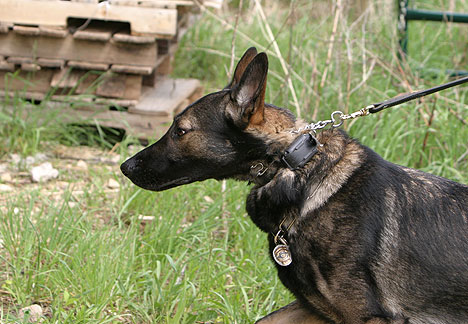
Testing Scents
Well, Dr. Adebimpe had handed me a sample of the scents his company produces. So, being a typically curious individual I thought to test the scents on explosive detection dog teams that had demonstrated their abilities through training and certification.
In determining what I was going to do I decided to leave out the TATP aid simply because none of the dogs had consistently been maintained on this particular substance in any reliable way.
That left some of the more common items, smokeless powder, dynamite, RDX, Semtex, and TNT, training aides. The question I wanted to ask in the tests was a simple one. Does a dog trained in the detection of these odors, which has been trained on the actual explosive compounds, recognize these training aides as it would an assigned substance?
The tests were set up in several phases and were separated by a large amount of time so that it would eliminate the dogs learning anything new. A problem with detector dogs is they have learned to learn odors in association with reward and they can learn this pretty quickly. By separating the tests by days this possibility would be minimized.
Tests were done on two geographically separate groups of handlers. I trained all these handlers but operate their maintenance training separately for the most part. Their training aides have come from a variety of sources over time and they represent a range of ages in the kits they train with. A total of five departments and 11 dogs were used in the tests. As is often true, other departments were invited but weren't able to coordinate for the tests due to scheduling issues and the inevitable impact of police work!
During each of these tests we conducted single blind examinations. Conducted just like certification exams. The only condition was that the handlers were told not to reward their dogs during the test and that a find would be placed at the end of the test for them to reward the dog.
The dogs were scored in a very simple manner. They would be scored a 1 for and alert, and a 0 for no alert, a 1 for an indication and a 0 for no indication. The definition of an alert is the physical changes associated with a detector dog's recognition of an odor, which it is assigned to detect. The indication is the behavior/s associated with the detector dog reaching the point where it cannot get closer to the odor from its perspective, this may be a group of behaviors, such as staring, sitting, downing, focusing on the location it perceives, etc. All these behaviors being somewhat individual for the dog involved but within the guidelines of training and standards. Evaluators were seasoned K-9 instructors.
Test 1 - Classrooms
This test was done at a charter school and the aides were placed in the classrooms inside various typical school furniture and storage. The aides were opened for the first time ever and removed from their Mylar packages with gloves.
The handlers were given the instructions that they would treat this training scenario as a certification examination.
Not recorded in the test is the blank room that was included in the test where no aide was present.
Results
| Police Service Dog | TNT | RDX | Smokeless | Semtex | Dynamite |
|---|---|---|---|---|---|
| #1 | 1,1 | 1,1 | 0,0 | 1,0 | 1,1 |
| #2 | 1,0 | 1,1 | 1,0 | 1,0 | 1,1 |
| #3 | 1,1 | 1,1 | 1,1 | 1,1 | 1,0 |
| #4 | 1,0 | 1,1 | 1,0 | 1,0 | 1,1 |
| #5 | 1,0 | 1,1 | 0,0 | 1,0 | 0,0 |
| #6 | 1,1 | 1,1 | 1,0 | 1,1 | 1,1 |
Observations
The first thing that struck the handlers was the shear quantity of odor the dogs were addressing with many of the aides, in particular the Semtex aid. Handlers, including myself could smell the aid upon entry into the classroom!
Some dogs presented a strong alert but could not finish and indicate, the question we cannot answer is whether this was the odor wasn't “right” from the dog's perspective but was close enough to illicit the alert, or whether it was a phenomena often observed by handlers and instructors in which dogs simply fail to indicate on large quantities unless they have had the opportunity to gain experience with large quantities. Subjectively I believe it is this particular issue and I determined to repeat this test in a manner that would minimize this effect.
Smokeless powder aide provided the highest number of no indications and is the only aid where some dogs showed no alert.
Test 2 - Vehicles
The next examination was done using vehicles some time later. The situation was set up the same way with the exception that all were done outdoors and each search consisted of numerous vehicles in a large lot.
Results
| Police Service Dog | TNT | RDX | Smokeless | Semtex | Dynamite |
|---|---|---|---|---|---|
| #1 | 1,1 | 1,1 | 1,0 | 1,1 | 1,1 |
| #2 | 1,1 | 1,1 | 1,1 | 1,1 | 1,1 |
| #3 | 1,1 | 1,1 | 1,1 | 1,1 | 1,0 |
| #4 | 1,1 | 1,1 | 1,0 | 1,1 | 1,1 |
| #5 | 1,1 | 1,1 | 1,1 | 1,1 | 1,1 |
Observations
In these tests the outcome was much better. The time was nearly a month later so learning could not have been a factor as the dogs had been presented to the material only once prior. The outdoor environment allowed the dissipation of odor to occur more quickly. It was seen that some dogs had the scent cone large distances from the find if they were down wind from it. Suggesting the replication of a large amount of odor from the source.
Test 3 - Large Rooms
The next examination was on a different set of dogs half way across the country from me. Time and facilities were tight so I did not test all odors in all environments.
Results
| Police Service Dog | TNT | RDX | Smokeless | Semtex | Dynamite |
|---|---|---|---|---|---|
| A | 1,1 | 1,1 | 1,1 | 1,1 | 1,1 |
| B | 0,0 | 1,1 | 1,1 | 1,0 | 1,1 |
| C | 1,1 | 1,1 | 1,1 | 1,1 | 1,1 |
| D | 1,1 | 1,1 | 1,1 | 1,1 | 1,0 |
| E | 1,1 | 1,1 | 1,1 | 1,1 | 1,1 |
Observations
The dogs did well in a large very well ventilated building. The difference between this test and #1 was sheer size. We were working in a defunct hotel with large conference rooms and indoor pool and miniature golf areas. It afforded much more volume than the classrooms in test one. In addition, the dogs in this group had just completed a special training session on large quantities shortly before. This reinforces my conclusions that test #1 represented a problem with the quantity of odor.
Test 4 - Vehicles (Group 2)
The next test was a test in vehicles once again with the second group of dogs.
Results
| Police Service Dog | RDX | Semtex | Dynamite |
|---|---|---|---|
| A | 1,1 | 1,1 | 1,1 |
| B | 1,1 | 1,1 | 1,1 |
| C | 1,1 | 1,1 | 1,1 |
| D | 1,1 | 1,1 | 1,0 |
| E | absent | absent | absent |
Observations
These posed no problems for the dogs. I might note that only one day separated test 3, 4, &5. Is it possible that the dogs learned?? Since rewarding the dogs was not allowed I think this was minimized.
Test 5
The next test was in luggage; due to a minimal amount of luggage I selected two of the ScentLogix™ aides to use in this test, ones where the dogs had showed a lower success rate in some previous tests.
Results for Luggage
| Police Service Dog | Smokeless | TNT |
|---|---|---|
| A | 0,0 | 1,0 |
| B | 1,1 | 1,1 |
| C | 1,1 | 1,1 |
| D | 1,1 | 1,1 |
| E | 1,1 | 1,1 |
Observation
Not all went as well as the buildings and vehicles in this test. It might be a lack of training in this particular discipline. It may have been something else. I will not hazard a guess at this point.
Conclusion
Overall assessment. The EDD teams had very little problems in locating the aides manufactured by ScentLogix™. They did seem to present a similar issue as seen on large quantity finds by dogs not familiar with such volume of odor. I thought to do a statistical analysis on these figures but realistically they fell outside some of the norms for such things. There is no control group, there are some variables that could not be controlled in the environments I did the test; the sample size is too small. Now, I don't say this to negate the results. It simply means that a one sided quantitative assessment of these tests is inappropriate and that it is necessary to include a qualitative view of this information as well.
I view these tests as a success for the ScentLogix™ aides. Many might see them as inconclusive. They might be totally wrong.
I plan on adding these aides as part of the program in which I work, to fill a gap that exists in the refinement of the explosive detection dog team. They afford a safe way of increasing the volume of odor the dogs can deal with and to cross check them for efficacy.
Would I like to see some changes or additions? Yes, I would like a small volume aide. A maybe 30-40cc vial with an aid inside made of glass included with each kit. It would allow some basic training to occur using the aides that are difficult to accomplish in their present form.
More questions? Yes, I would like to know what the dogs use as a signature. Beyond what the aides are made of and what the dog is presented with either by the manufactured scents or by the explosives they represent, what are the dogs using to identify them. This is the real question in dog training which could either simplify or complicate our work.
In addition, the next logical test is to train dogs only on the ScentLogix™ aides and then test on the real explosives they represent. I will be doing this with the TATP aide David provided me in the near future.



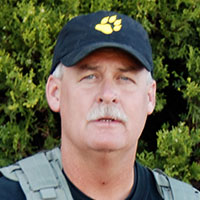
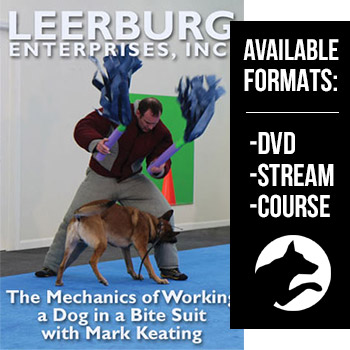
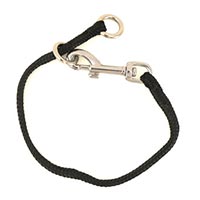
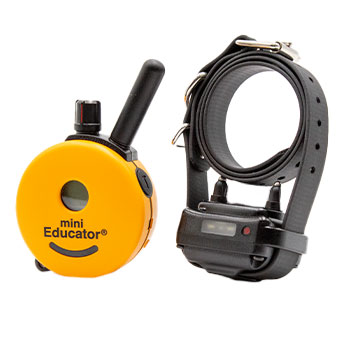
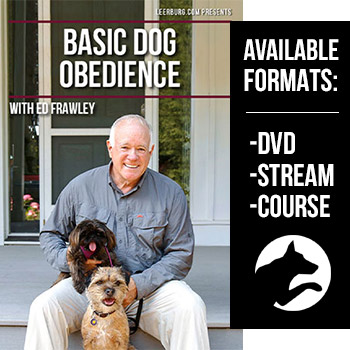
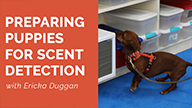
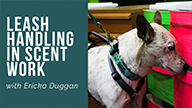
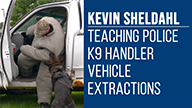
Ask Cindy.